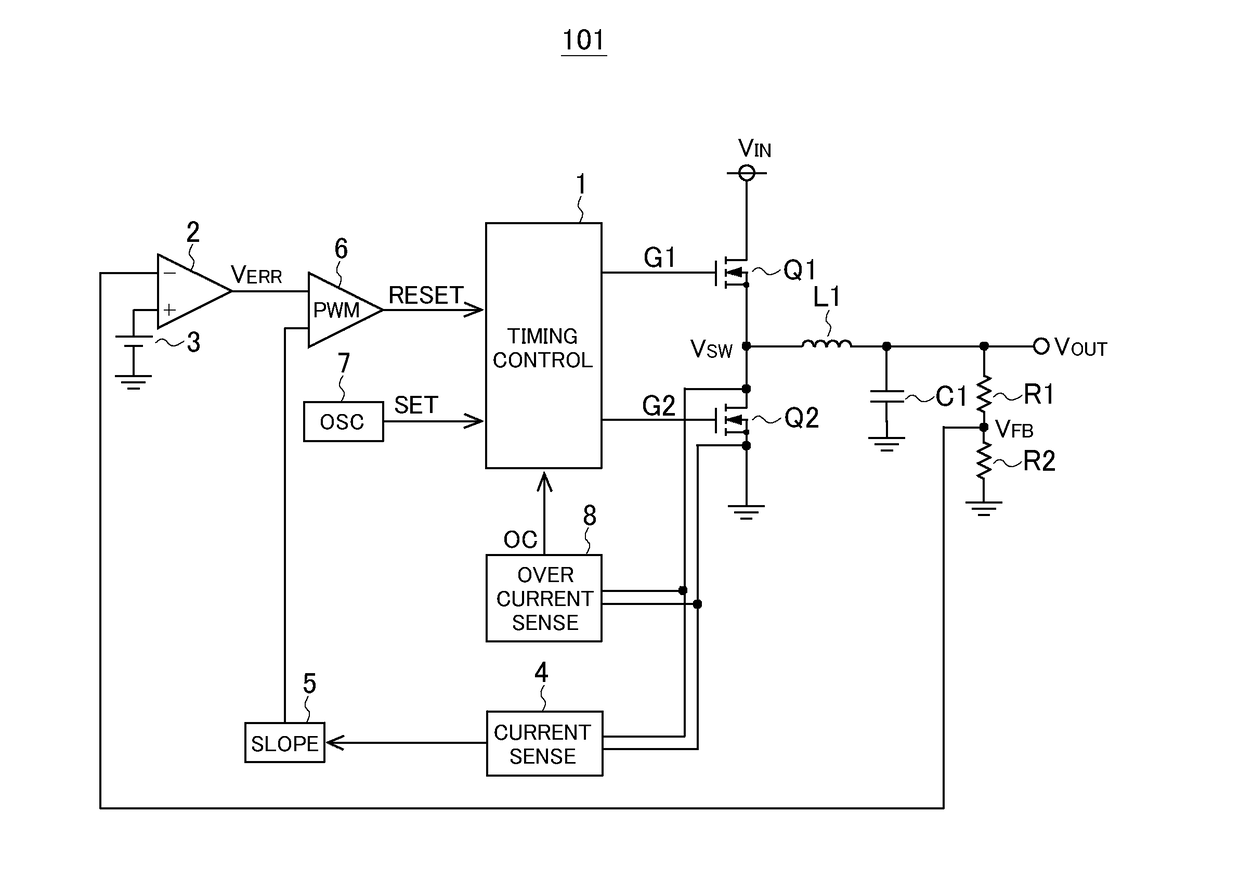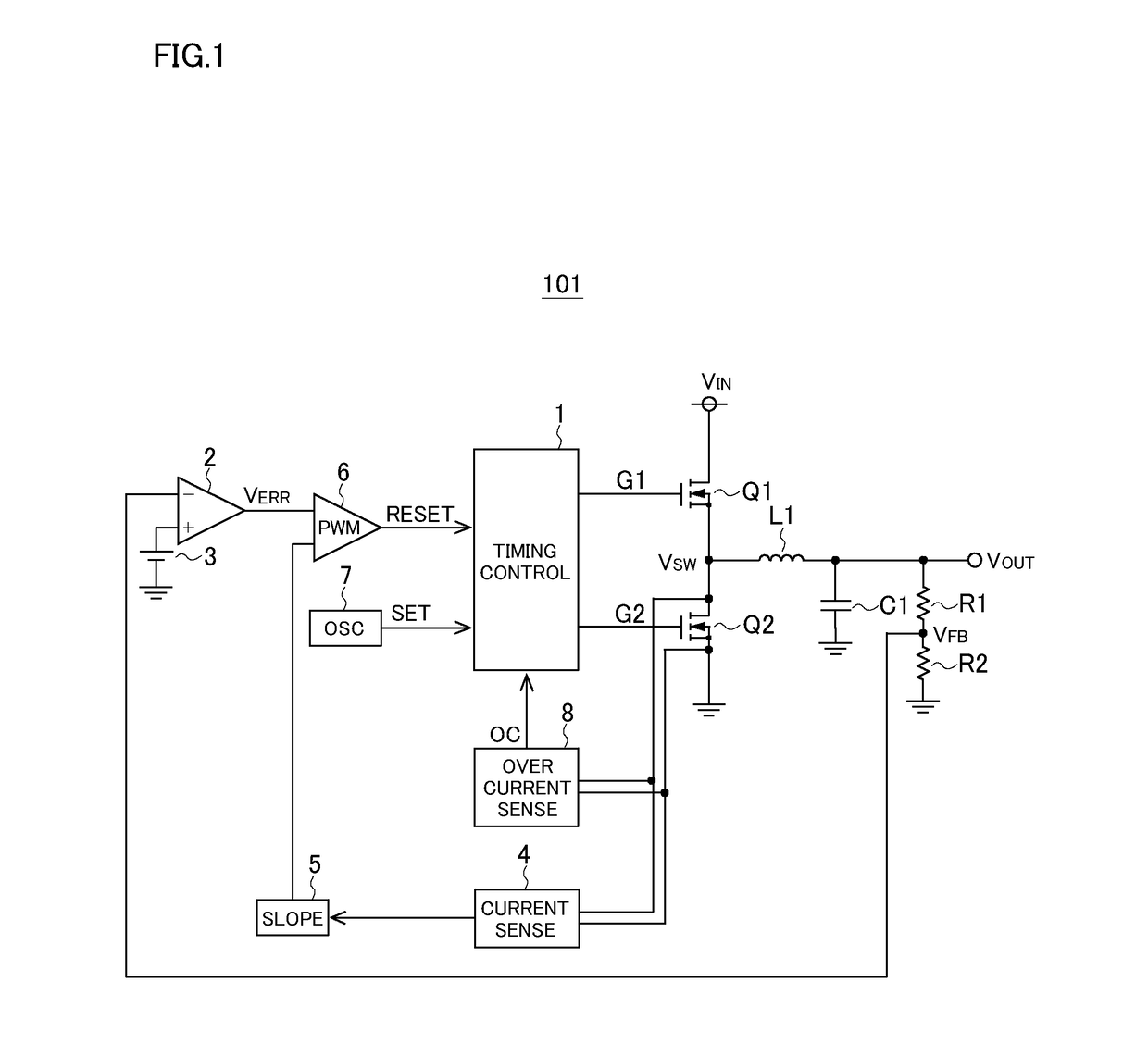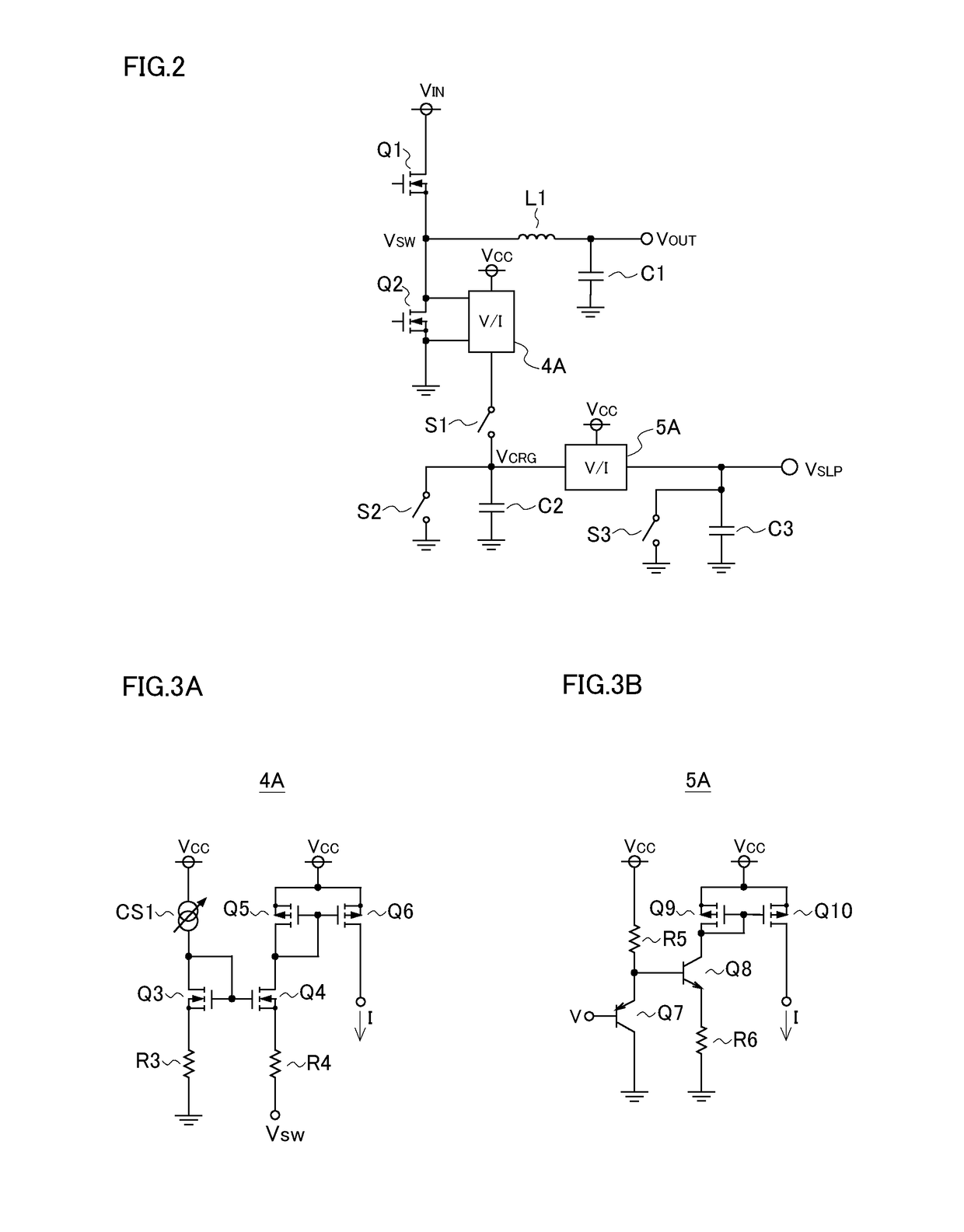Switching regulator
a technology of switching regulator and regulator, which is applied in the direction of pulse technique, process and machine control, instruments, etc., can solve the problems of inability to sense an overcurrent through the high-side mos transistor q, and inability to detect a sta
- Summary
- Abstract
- Description
- Claims
- Application Information
AI Technical Summary
Benefits of technology
Problems solved by technology
Method used
Image
Examples
Embodiment Construction
[0035]Overall Configuration: FIG. 1 is a diagram showing an example of the overall configuration of a current-mode-control switching power supply device (current-mode-control switching regulator). The switching power supply device 101 of this configuration example is a current-mode-control switching power supply device that performs step-down operation to step down an input voltage, and includes a timing control circuit 1, a high-side MOS transistor Q1, a low-side MOS transistor Q2, an inductor L1, an output capacitor C1, voltage division resistors R1 and R2, an error amplifier 2, a reference voltage source 3, a current sense circuit 4, a slope circuit 5, a comparator 6, an oscillator 7, and an overcurrent sense circuit 8.
[0036]The timing control circuit 1 controls the ON / OFF states of the high-side and low-side MOS transistors Q1 and Q2, and generates gate signals G1 and G2 for the high-side and low-side MOS transistors Q1 and Q2 respectively according to a set signal SET and a res...
PUM
 Login to View More
Login to View More Abstract
Description
Claims
Application Information
 Login to View More
Login to View More - R&D
- Intellectual Property
- Life Sciences
- Materials
- Tech Scout
- Unparalleled Data Quality
- Higher Quality Content
- 60% Fewer Hallucinations
Browse by: Latest US Patents, China's latest patents, Technical Efficacy Thesaurus, Application Domain, Technology Topic, Popular Technical Reports.
© 2025 PatSnap. All rights reserved.Legal|Privacy policy|Modern Slavery Act Transparency Statement|Sitemap|About US| Contact US: help@patsnap.com



